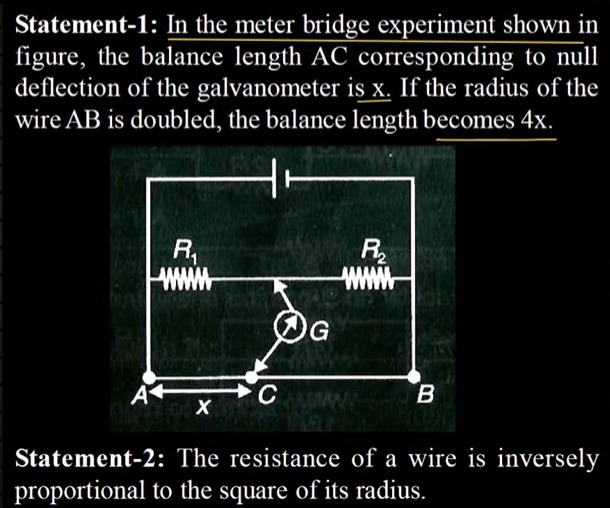Question
Question: Statement-1: In the meter bridge experiment shown in figure, the balance length AC corresponding to ...
Statement-1: In the meter bridge experiment shown in figure, the balance length AC corresponding to null deflection of the galvanometer is x. If the radius of the wire AB is doubled, the balance length becomes 4x.
Statement-2: The resistance of a wire is inversely proportional to the square of its radius.

Statement-1 is false. Statement-2 is true.
Solution
Statement-2 is correct because the resistance of a wire is given by R=ρmAL, where A=πr2. Thus, R∝r21. In a meter bridge, the balance condition is R2R1=RCBRAC. If the resistance per unit length of the wire AB is ρ, then RAC=ρx and RCB=ρ(L−x), where L is the total length of the wire. This gives R2R1=L−xx. When the radius of the wire AB is doubled, its resistance per unit length becomes ρ/4. Let the new balance length be x′. The balance condition becomes R2R1=(ρ/4)(L−x′)(ρ/4)x′=L−x′x′. Since R1, R2, and L remain unchanged, the balance length x′ must be equal to x. Therefore, Statement-1 is false.
